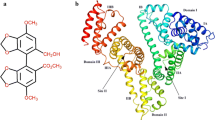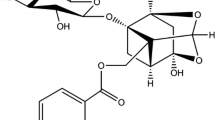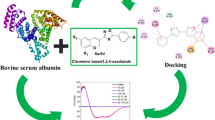Abstract
The investigation of the interaction of ruthenium(II)-bipyridine-tert-butylcalix[4]arene complexes (Rubc2 and Rubc3) with proteins (BSA and ovalbumin) using absorption, emission, excited state lifetime and circular dichroism techniques and by docking studies show that luminophore-receptor system bind strongly with proteins. An enhancement of absorption as well as emission intensity of Ru(II)-calixarene complexes in the presence of proteins, but the quenching of the emission intensity of proteins in the presence of Ru(II)-calixarene complexes are the interesting observations. The enhancement of emission intensity of Ru(II)-calixarene complex, in the presence of proteins, is due to the fluorescence resonance energy transfer (FRET) from protein to Ru(II)-calixarene complex. Among the two Ru(II)-calixarene complexes synthesized Rubc3 has more efficient binding and energy transfer than Rubc2 and BSA, with a large cavity size, has the advantage for binding over ovalbumin. Docking studies reveal that the presence of tert-butylcalix[4]arene moiety in Ru(II)-calixarene complexes facilitates binding with proteins. After the binding of Rubc2 and Rubc3 with proteins, the nearby fluorophores present in proteins are in optimal distance from the ruthenium centre for efficient FRET process to occur.









Similar content being viewed by others
References
Timerbaev AR, Hartinger CG, Aleksenko SS, Keppler BK (2006) Interactions of antitumor metallodrugs with serum proteins: advances in characterization using modern analytical methodology. Chem Rev 106:2224–2248
Kratz F, Keppler BK (1993) Metal complexes in cancer chemotherapy. VCH, Weinheim
Fasanol M, Curry S, Terreno E, Galliano M, Fanali G, Narciso P, Notari S, Ascenzi P (2005) The extraordinary ligand binding properties of human serum albumin. IUBMB Life 57:787–796
Peters T Jr (1996) All about albumin. Academic, Orlando
Paul BK, Samanta A, Guchhait N (2010) Exploring hydrophobic subdomain IIA of the protein bovine serum albumin in the native, intermediate, unfolded, and refolded states by a small fluorescence molecular reporter. J Phys Chem B 114:6183–6196
Carter DC, Ho JX (1994) Structure of serum albumin. Adv Protein Chem 45:153–176
He XM, Carter CD (1992) Atomic structure and chemistry of human serum albumin. Nature 358:209–215
Mahanta S, Singh RB, Guchhait N (2009) Study of protein–probe interaction and protective action of surfactant sodium dodecyl sulphate in urea-denatured HSA using charge transfer fluorescence probe methyl ester of N, N-dimethylamino naphthyl acrylic acid. J Fluoresc 19:291–302
Singh RB, Mahanta S, Bagchi A, Guchhait N (2009) Interaction of human serum albumin with charge transfer probe ethyl ester of N, N-dimethylamino naphthyl acrylic acid: an extrinsic fluorescence probe for studying protein micro-environment. Photochem Photobiol Sci 8:101–110
Singh RB, Mahanta S, Guchhait N (2009) Study of proteinous and micellar icroenvironment using donor acceptor charge transfer fluorosensor N, N-dimethylaminonaphthyl-(acrylo)-nitrile. Spectrochim Acta Part A 72:1103–1111
Banerjee P, Pramanik S, Sarkar A, Bhattacharya SC (2009) Deciphering the fluorescence resonance energy transfer signature of 3-pyrazolyl 2-pyrazoline in transport proteinous environment. J Phys Chem B 113:11429–11436
Zhong D, Douhal A, Zewail AH (2000) Femtosecond studies of protein–ligand hydrophobic binding and dynamics: human serum albumin. Proc Natl Acad Sci USA 97:14056–14061
Bos OJM, Labro JFA, Ficher MJE, Witling J, Janssen LHM (1989) The molecular mechanism of the neutral-to-base transition of human serum albumin. J Biol Chem 264:953–959
Peters T (1985) Advances in protein chemistry. Academic, New York
Li D, Zhu M, Xu C, Ji B (2011) Characterization of the baicalein–bovine serum albumin complex without or with Cu2+ or Fe3+ by spectroscopic approaches. Euro J Med Chem 46:588–599
Sun Y, Hayakawa S (2002) Heat-induced gels of egg white/ovalbumins from five avian species: thermal aggregation, molecular forces involved, and rheological properties. J Agric Food Chem 50:1636–1642
Creamer LK, Jimenez-Flores R, Richardson T (1988) Genetic modification of food proteins. Trends Biotechnol 6:163–169
Stein PE, Leslie GW, Finch JT, McLauglin DJ, Carell RW (1990) Crystal structure of ovalbumin as a model for the reactive centre of serpins. Nature 347:99–102
Azakami H, Mukai A, Kato A (2005) Role of amyloid type cross â-structure in the formation of soluble aggregate and gel in heat-induced ovalbumin. J Agric Food Chem 53:1254–1257
Pearce FG, Mackintosh SH, Gerrard JA (2007) Formation of amyloid-like fibrils by ovalbumin and related proteins under conditions relevant to food processing. J Agric Food Chem 55:318–322
Chakraborty T, Chakraborty I, Moulik SP, Gosh S (2009) Physicochemical and conformational studies on BSA-surfactant interaction in aqueous medium. Langmuir 25:3062–3074
Kratz F (2008) Albumin as a drug carrier: design of prodrugs, drug conjugates and nanoparticles. J Contr Release 132:171–183
Welz MM, Ofner CM III (1992) Examination of self-crosslinked gelatin as a hydrogel for controlled release. J Pharm Sci 81:85–90
Wheate NJ, Walker S, Craig GE, Oun R (2010) The status of platinum anticancer drugs in the clinic and in clinical trials. Dalton Trans 39:8113–8127
Rosenberg B, Lippert B (1999) Cisplatin. Chemistry and biochemistry of a leading Anticancer Drug. Helvetica Chimica Acta, Zurich
Brabec V, Novakova O (2006) DNA binding mode of ruthenium complexes and relationship to tumor cell toxicity. Drug Resist Updat 9:111–122
Kelland LR, Sharp SY, O’Neill CF, Raynaud FI, Beale PJ, Judson IR (1999) Mini-review: discovery and development of platinum complexes designed to circumvent cisplatin resistance. J Inorg Biochem 77:111–115
Barnard PJ, Levina A, Lay PA (2005) Chromium(V) peptide complexes: synthesis and spectroscopic characterization. Inorg Chem 44:1044–1053
Hartinger CG, Zorbas-Seifried S, Jakupec MA, Kynast B, Zorbas H, Keppler BK (2006) From bench to bedside—preclinical and early clinical development of the anticancer agent indazolium trans-[tetrachlorobis(1H-indazole)ruthenate(III)] (KP1019 or FFC14A). J Inorg Biochem 100:891–904
Yan YK, Melchart M, Habtemariam A, Sadler PJ (2005) Organometallic chemistry, biology and medicine: ruthenium arene anticancer complexes. Chem Commun 4764–4776
Bruijnincx PCA, Sadler PJ (2008) New trends for metal complexes with anticancer activity. Curr Opin Chem Biol 12:197–206
Webb MI, Walsby CJ (2011) Control of ligand-exchange processes and the oxidation state of the antimetastatic Ru(III) complex NAMI-A by interactions with human serum albumin. Dalton Trans 40:1322–1331
Puckett CA, Barton JK (2010) Targeting a ruthenium complex to the nucleus with short peptides. Bioorg Med Chem 18:3564–3569
Puckett CA, Barton JK (2008) Mechanism of cellular uptake of a ruthenium polypyridyl complex. Biochemisty 47:11711–11716
Puckett CA, Barton JK (2007) Methods to explore cellular uptake of ruthenium complexes. J Am Chem Soc 129:46–47
Barragan F, Lopez-Senín P, Salassa L, Betanzos-Lara S, Habtemariam A, Moreno V, Sadler PJ, Marchan V (2011) Photocontrolled DNA binding of a receptor-targeted organometallic ruthenium(II) complex. J Am Chem Soc 133:14098–14108
Salassa L, Ruiu T, Garino C, Pizarro AM, Bardelli F, Gianolio D, Westendorf A, Bednarski PJ, Lamberti C, Gobetto R, Sadler PJ (2010) EXAFS, DFT, Light-induced nucleobase binding, and cytotoxicity of the photoactive complex cis-[Ru(bpy)2(CO)Cl]+. Organometallics 29:6703–6710
Clarke MJ (2002) Ruthenium metallopharmaceuticals. Coord Chem Rev 232:69–93
Bertozzi CR, Kiessling LL (2001) Chemical glycobiology. Science 291:2357–2364
Mann DA, Kanai M, Maly DJ, Kiessling LL (1998) Probing low affinity and multivalent interactions with surface Plasmon resonance: ligands for concanavalin A. J Am Chem Soc 120:10575–10582
Takashima H, Shinkai S, Hamachi I (1999) Ru(bpy)3-based artificial receptors toward a protein surface: selective binding and efficient photoreduction of cytochrome c. Chem Commun 2345–2346
Ohkanda J, Satoh R, Kato N (2009) Protein surface recognition by dendritic ruthenium(II) tris(bipyridine) complexes. Chem Commun 6949–6951.
Kikkeri R, Garcia-Rubio I, Seeberger PH (2009) Ru(II)–carbohydrate dendrimers as photoinduced electron transfer lectin biosensors. Chem Commun 235–237.
Hamuro Y, Calama MC, Park HS, Hamilton AD (1997) A calixarene with four peptide loops: an antibody mimic for recognition of protein surface. Angew Chem Int Ed Engl 36:2680–2683
Scolaro C, Chaplin AB, Hartinger CG, Bergamo A, Cocchietto M, Keppler BK, Savab G, Dyson PJ (2007) Tuning the hydrophobicity of ruthenium(II)–arene (RAPTA) drugs to modify uptake, biomolecular interactions and efficacy. Dalton Trans 5065–5072.
Peczuh MW, Hamilton AD (2000) Peptide and protein recognition by designed molecules. Chem Rev 100:2479–2494
Zhou H, Wang D, Baldini L, Ennis E, Jain R, Carie A, Sebti SM, Hamilton AD (2006) Structure–activity studies on a library of potent calix[4]arene-based PDGF antagonists that inhibit PDGF-stimulated PDGFR tyrosine phosphorylation. Org Biomol Chem 2376–2386.
Park HS, Lin Q, Hamilton AD (2002) Modulation of protein–protein interactions by synthetic receptors: design of molecules that disrupt serine protease–proteinaceous inhibitor interaction. Proc Natl Acad Sci USA 99:5105–5109
Balskovich MA, Lin Q, Delarue FL, Sun J, Park HS, Coppola D, Hamilton AD (2000) Design of GFB-111, a platelet-derived growth factor binding molecule with antiangiogenic and anticancer activity against human tumors in mice. Nat Biotechnol 18:1065–1070
Grimmer S, van Deurs B, Sandvig K (2002) Membrane ruffling and macropinocytosis in A431 cells require cholesterol. J Cell Sci 115:2953–2962
Lalor R, Baillie-Johnson H, Redshaw C, Matthews SE, Mueller A (2008) Cellular uptake of a fluorescent calix[4]arene derivative. J Am Chem Soc 130:2892–2893
Perret F, Lazar AN, Coleman AW (2006) Biochemistry of the para-sulfonato-calix[n]arenes. Chem Commun 2425–2438.
Baldini L, Casnati A, Sansone F, Ungaro R (2007) Calixarene-based multivalent ligands. Chem Sov Rev 36:254–266
Chini MG, Terracciano S, Riccio R, Bifulco G, Ciao R, Gaeta C, Rroisi F, Neri P (2010) Conformationally locked calixarene-based histone deacetylase inhibitors. Org Lett 12:5382–5385
Szemes F, Hesek D, Chen Z, Dent SW, Drew MGB, Goulden AJ, Graydon AR, Grieve A, Mortimer RJ, Wear T, Weightman JS, Beer PD (1996) Synthesis and characterization of novel acyclic, macrocyclic, and calix[4]arene ruthenium(II) bipyridyl receptor molecules that recognize and sense anions. Inorg Chem 35:5868–5879
Lo KK, Tsang KH, Hui WK, Zhu N (2005) Synthesis, characterization, crystal structure, and electrochemical, photophysical, and protein-binding properties of luminescent rhenium(I) diimine indole complexes. Inorg Chem 44:6100–6110
Goto Y, Matsuno R, Konno T, Takai M, Ishihara K (2008) Polymer nanoparticles covered with phosphorylcholine groups and immobilized with antibody for high-affinity separation of proteins. Biomacromolecules 9:828–833
Lakowicz JR (2006) Principles of fluorescence spectroscopy, 3rd edn. Kluwer Academic Press, New York
Pan T, Xiao ZD, Huang PM (2009) Characterize the interaction between polyethylenimine and serum albumin using surface plasmon resonance and fluorescence method. J Lumin 129:741–745
Petitpas I, Bhattacharya AA, Twine S, East M, Curry S (2001) Crystal structure analysis of warfarin binding to human serum albumin. Anatomy of drug site I. J Biol Chem 276:22804–22809
Mol CD, Arvai AS, Sanderson RJ, Slupphaug G, Kavli B, Krokan HE, Mosbaugh DW, Tainer JA (1995) Crystal structure of human uracil-DNA glycosylase in complex with a protein inhibitor: protein mimicry of DNA. Cell 82:701–708
Dundas J, Ouyang Z, Tseng J, Binkowski A, Turpaz Y, Liang J (2006) CASTp: computed atlas of surface topography of proteins with structural and topographical mapping of functionally annotated residues. Nucl Acids Res 34:W116–W118
Verdonk ML, Cole JC, Hartshorn MJ, Murray CW, Taylor RD (2003) Improved protein-ligand docking using GOLD. Proteins 52:609–623
Pettersen EF, Goddard TD, Huang CC, Couch GS, Greenblatt DM, Meng EC, Ferrin TE (2004) UCSF Chimera—a visualization system for exploratory research and analysis. J Comput Chem 25:1605–1612
Ojha B, Das G (2010) The interaction of 5-(Alkoxy)naphthalen-1-amine with bovine serum albumin and its effect on the conformation of protein. J Phys Chem B 114:3979–3986
Kudryashova EV, Visser AJWG, van Hoek A, de Jongh HHJ (2007) Molecular details of ovalbumin-pectin complexes at the air/water interface: a spectroscopic study. Langmuir 23:7942–7950
Shih C, Museth AK, Abrahamsson M, Blaco-Rodriguez AM, Di Bilio AJ, Sudhamu J, Crane BR, Ronayne KL, Twine M, Vicek A Jr, Richards JH, Winkler JR, Gray HB (2008) Tryptophan-Accelerated electron flow through proteins. Science 320:1760–1762
Anula HM, Myshkin E, Guliaer A, Luman C, Danilov EO, Castellano FN, Bullerjahn GS, Rodgers MAJ (2006) Photo processes on self-associated cationic porphyrins and plastocyanin complexes 1. Ligation of plastocyanin tyrosine 83 onto metalloporphyrins and electron-transfer fluorescence quenching. J Phys Chem A 110:2545–2559
Tang Y, He F, Yu M, Wang S, Li Y, Zhu D (2006) Radical scavenging mediating reversible fluorescence quenching of an anionic conjugated polymer: highly sensitive probe for antioxidants. Chem Matter 18:3605–3610
Savariar EN, Gosh S, Gonzalez DC, Thayumanavan S (2008) Disassembly of noncovalent amphiphilic polymers with proteins and utility in pattern sensing. J Am Chem Soc 130:5416–5417
De Geest BG, Sanders NN, Sukhorukuv GB, Demmester J, De Semedt SS (2007) Release mechanisms for polyelectrolyte capsules. Chem Soc Rev 36:636–649
Cheng X, Bing T, Liu X, Shangguan D (2009) A label-free fluorescence sensor for probing the interaction of oligonucleotides with target molecules. Anal Chim Acta 633:97–102
Michalet X, Weiss S, Jager M (2006) Single-molecule fluorescence studies of protein folding and conformational dynamics. Chem Rev 106:1785–1813
Flehr R, Kienzler A, Bannwarth W, Kumke MU (2010) Photophysical characterization of a FRET system using tailor-made DNA oligonucleotide sequences. Bioconjucate Chem 21:2347–2354
Dalgarno SJ, Thallapally PK, Barbour LJ, Atwood JL (2007) Engineering void space in organic van der Waals crystals: calixarenes lead the way. Chem Soc Rev 36:236–245
Atwood JL, Barbour LJ, Jerga A (2004) A new type of material for the recovery of hydrogen from gas mixtures. Angrew Chem Int Ed 43:2948–2950
Hontama N, Inokuchi Y, Ebata T, Dedonder-Lardeux C, Jouvet C (2010) Structure of the calix[4]arene-(H2O) cluster: the world’s smallest cup of water. J Phys Chem A 114:2967–2972
Forster T, Sinanoglu O (1996) Modern quantum chemistry, vol 3. Academic, New York
Acknowledgement
We thank Prof. P. Ramamurthy, National Centre for Ultrafast Processes, University of Madras, Taramani, Chennai for his help in excited state lifetime studies. We thank Prof. S. Krishnasamy, School of Biotechnology, Madurai Kamaraj University for his help in the docking studies. We thank UGC-UPE for financial support. We thank Dr. M. Vairamani, IICT, Hyderabad for his help in taking HR-MS.
Author information
Authors and Affiliations
Corresponding author
Electronic supplementary material
Below is the link to the electronic supplementary material.
ESM 1
(DOC 1787 kb)
Rights and permissions
About this article
Cite this article
Mareeswaran, P.M., Maheshwaran, D., Babu, E. et al. Binding and Fluorescence Resonance Energy Transfer (FRET) of Ruthenium(II)-Bipyridine-Calixarene System with Proteins—Experimental and Docking Studies. J Fluoresc 22, 1345–1356 (2012). https://doi.org/10.1007/s10895-012-1074-9
Received:
Accepted:
Published:
Issue Date:
DOI: https://doi.org/10.1007/s10895-012-1074-9




